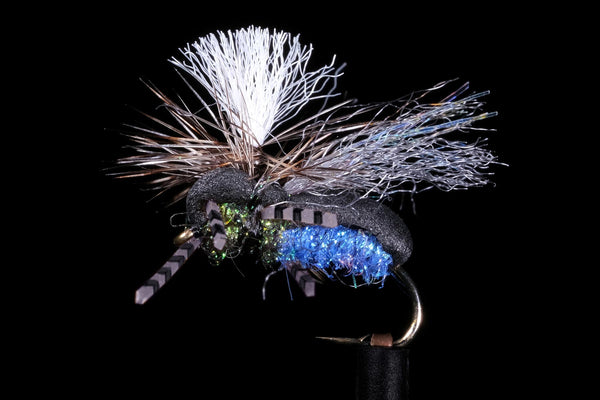How To Choose The Right Indicator Dry Fly
What do I use? Where do I use it? When should I use it? There's only one solution to all of those questions and that is to tap into the genius of arguably one of New Zealand's most learned fly fishing aficionados, your old mate and ours, Chris Dore.
Chris Dore's top three things to think about when picking your indicator dry fly.
1. Wind resistance
Once the energy from the cast hits the dry, your nymph pretty much turns over under its own momentum which can create issues if the momentum isn’t there. While large, bushy dries make for great attractor patterns and are fun to watch fish move to, their wind resistance can slow down the final stages of your turnover dramatically, especially on our longer, South Island leader systems. Consider a fly that floats well, but is a little more streamlined than that boofy rubber legged, high winged thing in the back of your box. Keep that for a solo presentation.

Swishers PMX Peacock
2. Visibility
You simply have to be able to see your indicator, well. While white wings stand out on big Wulffs and the like, they can get lost amongst the glare or foam lines when fishing more subtle patterns. Chances are your dry is but a silhouette when seen from below so don’t be afraid to go colourful when selecting your indicator dry. Yellow, orange, and black in severe glare stand out easily in a variety of conditions. If you prefer more natural colours then consider the contrast of a black / white, two tone wing or para post.

X-Stimulator Royal
3. Consider the water
That size 16 parachute may be just the thing for that smooth Mataura edgewater but good luck seeing it in your typical back country pocket water. Likewise that size 6 PMX bounces over that heavy water with ease but may put that lowland willow grubber on alert.

Wayne's Blowfly
Here are a few fly suggestions from the Manic Fly Collection for these three points and what kinds of water they are best suited to.
Bouncy Water
This is water that is quite turbulent and your fly is all over the show. You need a fly you can see and a fly that has mass.


Smooth Water
This one is pretty self explanatory, right? A more delicate and smaller fly can be used...such as;



Joggly Water
Whilst not as aggressive as bouncy water, joggly water still requires flies with visibility, but with a subtle degree of less mass.



ABOUT THE AUTHOR:
Chris Dore is a battle-tested fly fishing guide with over 17 years of professional guiding experience, battling the demanding, ever-changing conditions that New Zealand rivers throw at you.
In 2006 Chris became one of the first New Zealanders to successfully pass the internationally recognised Federation of Fly Fishers Certified Casting Instructors examination and has since taught many thousands of anglers to up their skillset.
For more in person and on river fly fishing advice and upskilling why not book Chris for a day or three?

